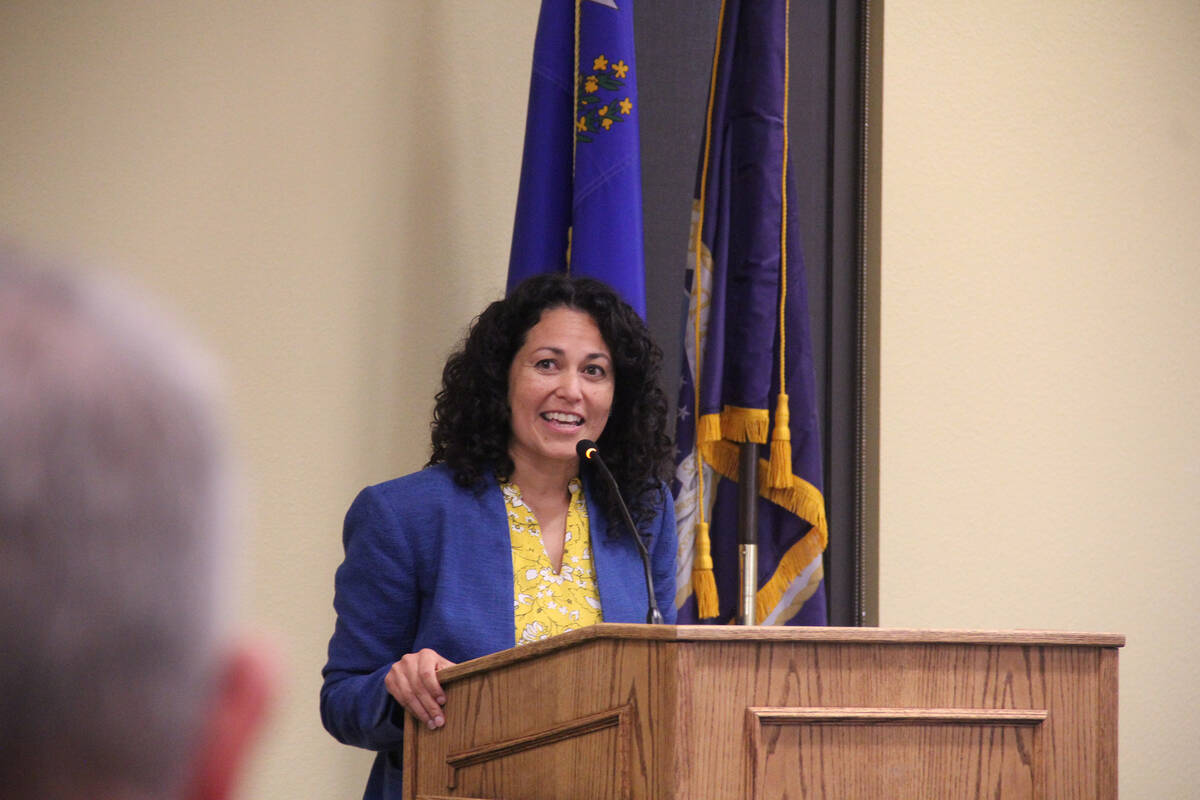With more federal funds for Pahrump and millions more acres of public land freed up for solar across the American West, it’s safe to say more solar is slated for the Mojave Desert.
The Bureau of Land Management released its updated plan for solar energy in the West on Thursday. It makes available roughly 31 million acres of land across 11 Western states for potential solar development in an effort to more rapidly transition the country away from fossil fuel sources such as oil and gas.
Meanwhile, Pahrump will benefit from the Agriculture Department’s announcement of the country’s largest rural energy investment since President Franklin Roosevelt signed the Rural Electrification Act in 1936. The Powering Affordable Clean Energy program has awarded $1 billion to stimulate projects in rural communities since 2023.
The solar project, proposed by the Valley Electric Association, would gain more than $80 million to power 3,500 homes, pending approval from federal permitting processes.
“Early on in the Biden-Harris administration, we recognized that sometimes the communities that most deserve the support can’t get it,” Deputy Secretary Xochitl Torres Small told the Las Vegas Review-Journal in an interview Thursday. “The goal is to drive down electric bills for rural areas, while also investing in clean energy.”
Solar in Pahrump a delicate subject
Many solar projects are proposed along the Nye-Clark County line, but concern among local officials and residents in Pahrump is heightened.
Spare water, needed for solar construction, is scarce in Pahrump’s hydrological basin. That basin is considered the most over-appropriated in Nevada, meaning people have the right to pump far more water than is recharged every year from snowpack.
Activists also have called attention to how solar diminishes the habitat of the desert tortoise, considered threatened by the U.S. Fish and Wildlife Service.
Still, the project will be to the direct benefit of residents in Pahrump and Fish Lake Valley — something residents have lamented not being the case with other proposed projects in the area that are taking water resources without directly benefiting the area.
Torres Small said it’s vital for companies awarded funding from the USDA to engage with the people they serve.
“Like any development, it’s really important that you keep your eye on the impact that it’s going to have on a community,” she said. “Development concerns need to be part of that conversation.”
In a statement, Valley Electric CEO Mark Stallons said he plans on working with Nye County commissioners to ensure that the project is to the community’s maximum benefit.
Renewable energy jobs will be created by the construction of the facility, too, he said.
“Accelerating these projects and bringing them online more quickly will add stability amid a challenging power supply environment, establishing energy equity in rural Southern Nevada,” Stallons said.
Contact Alan Halaly at ahalaly@reviewjournal.com. Follow @AlanHalaly on X.

